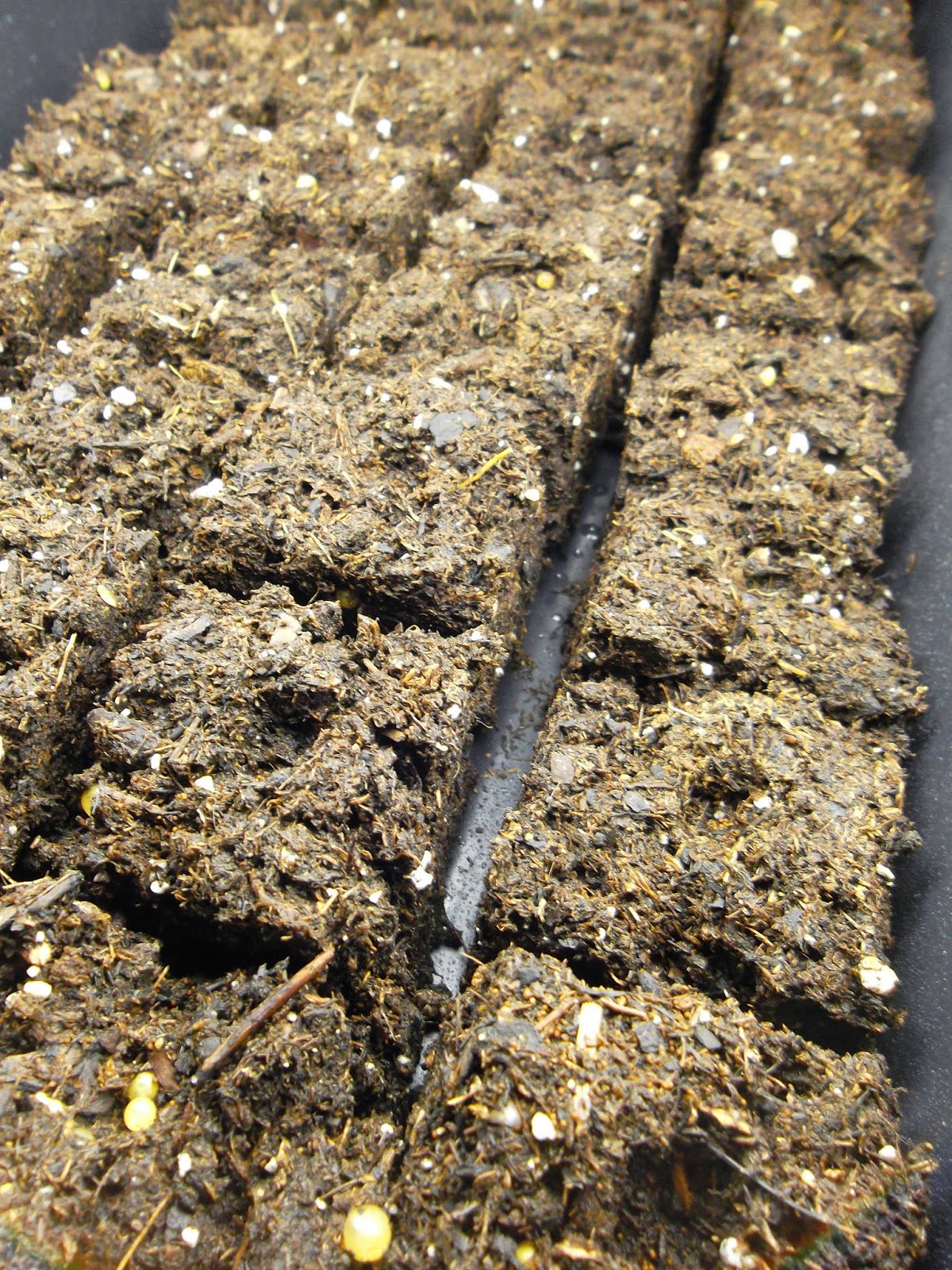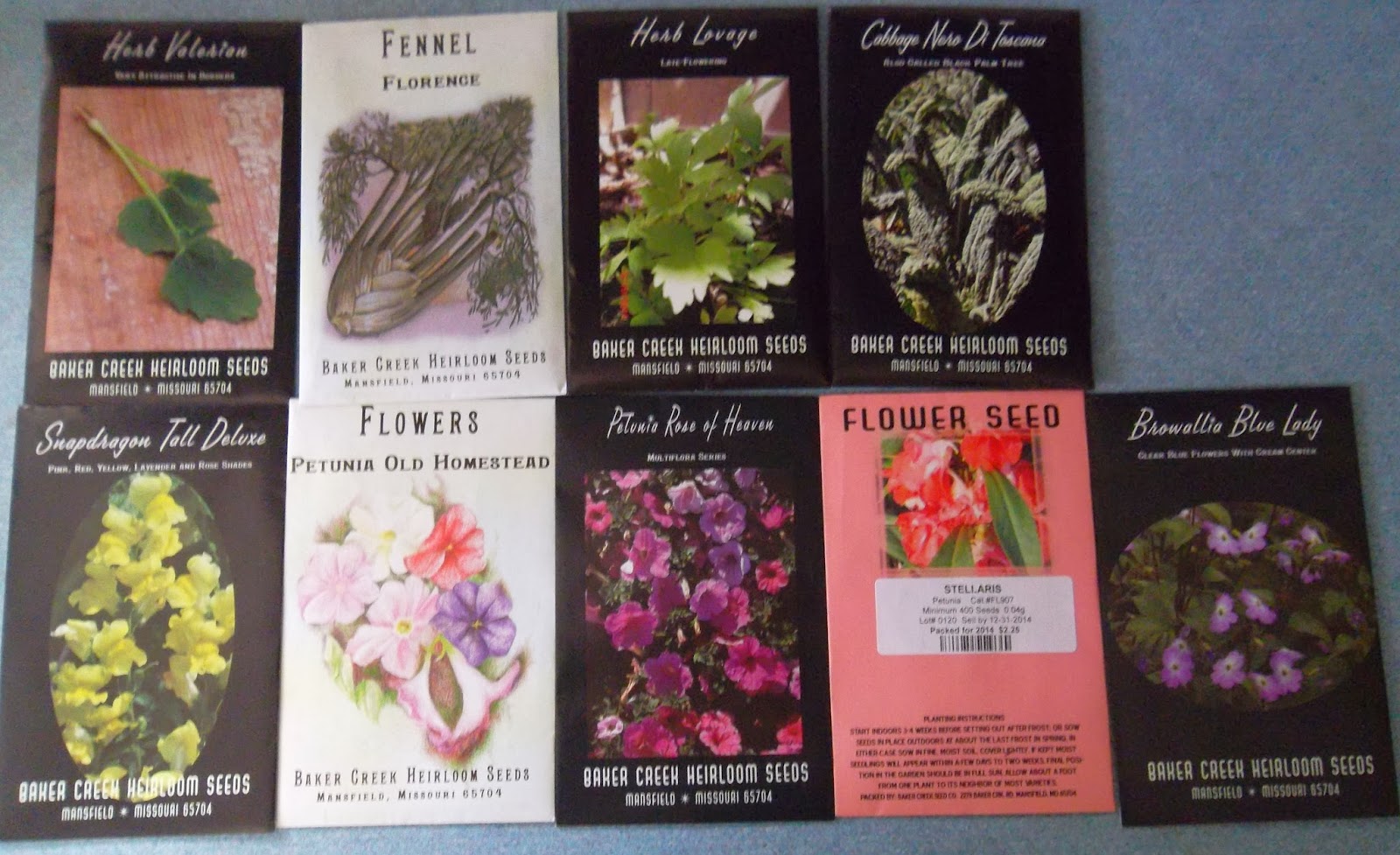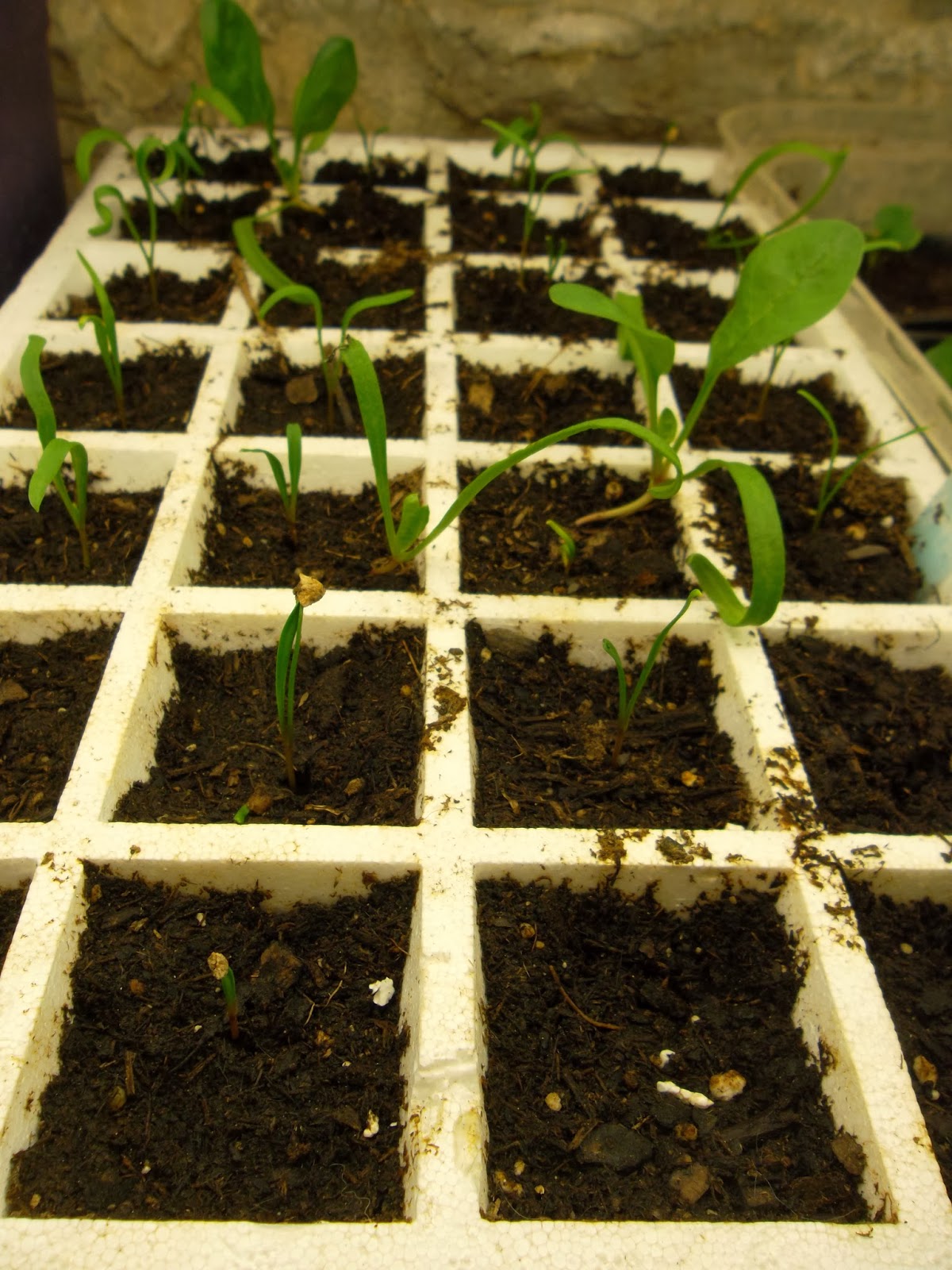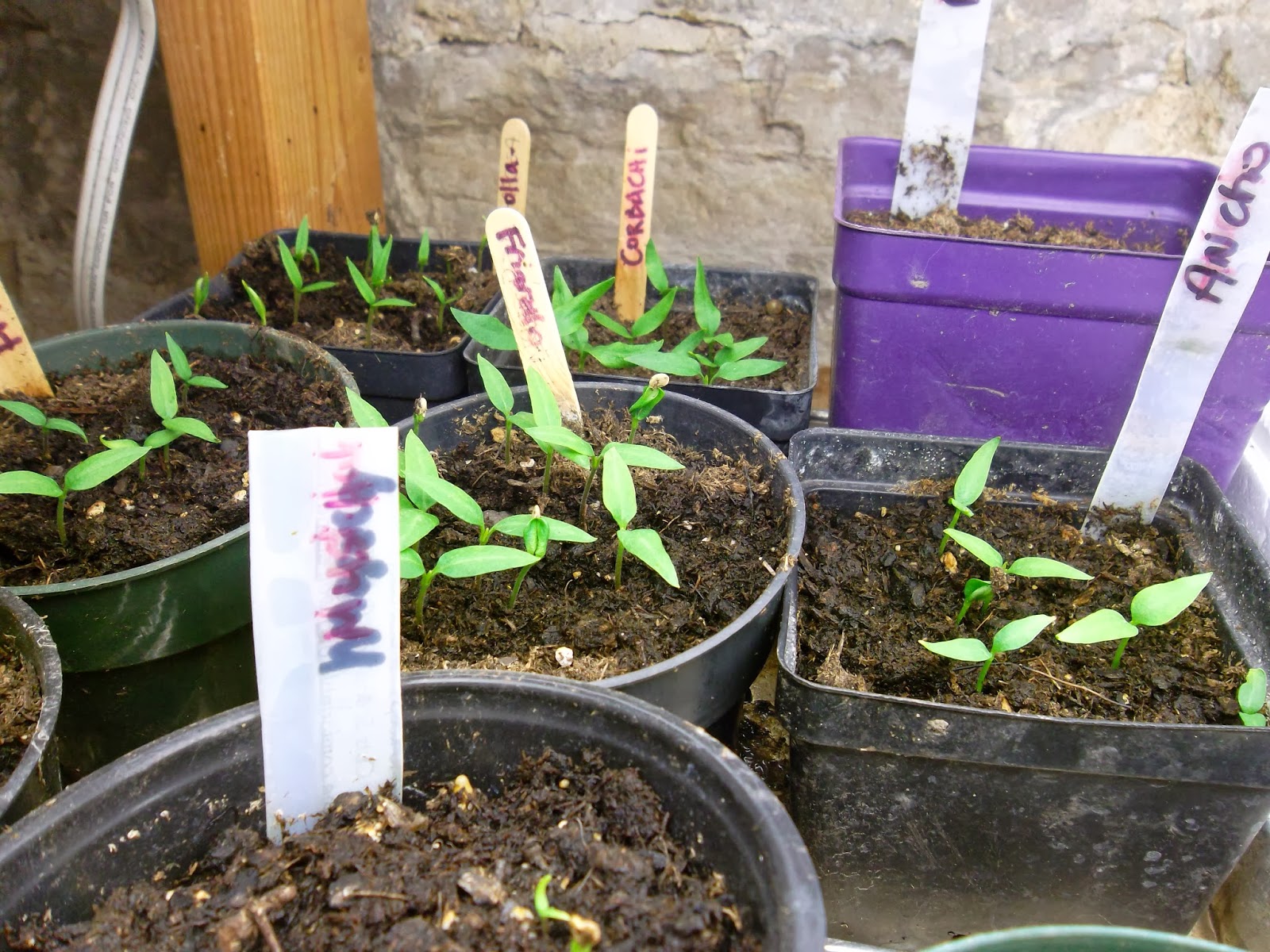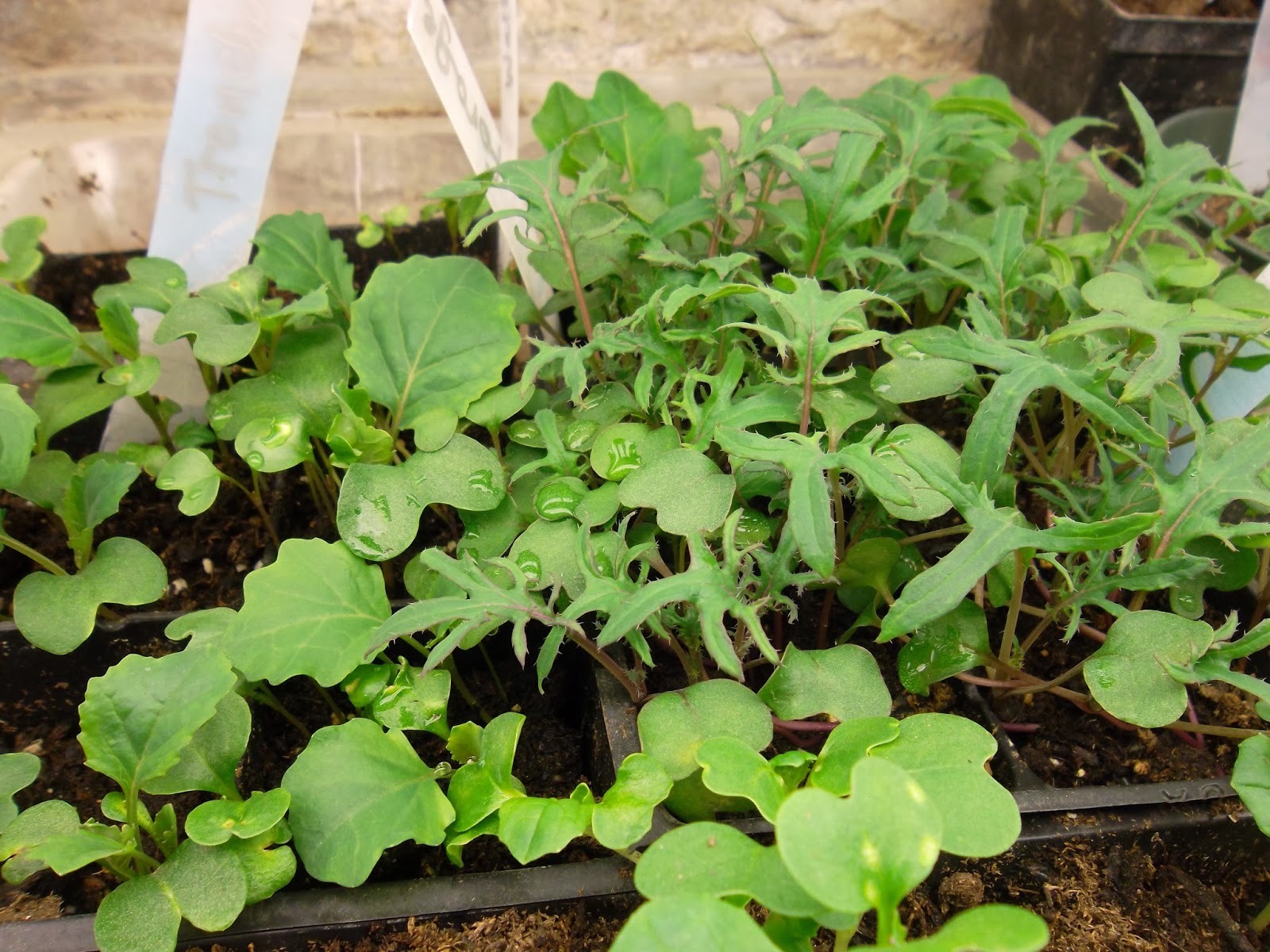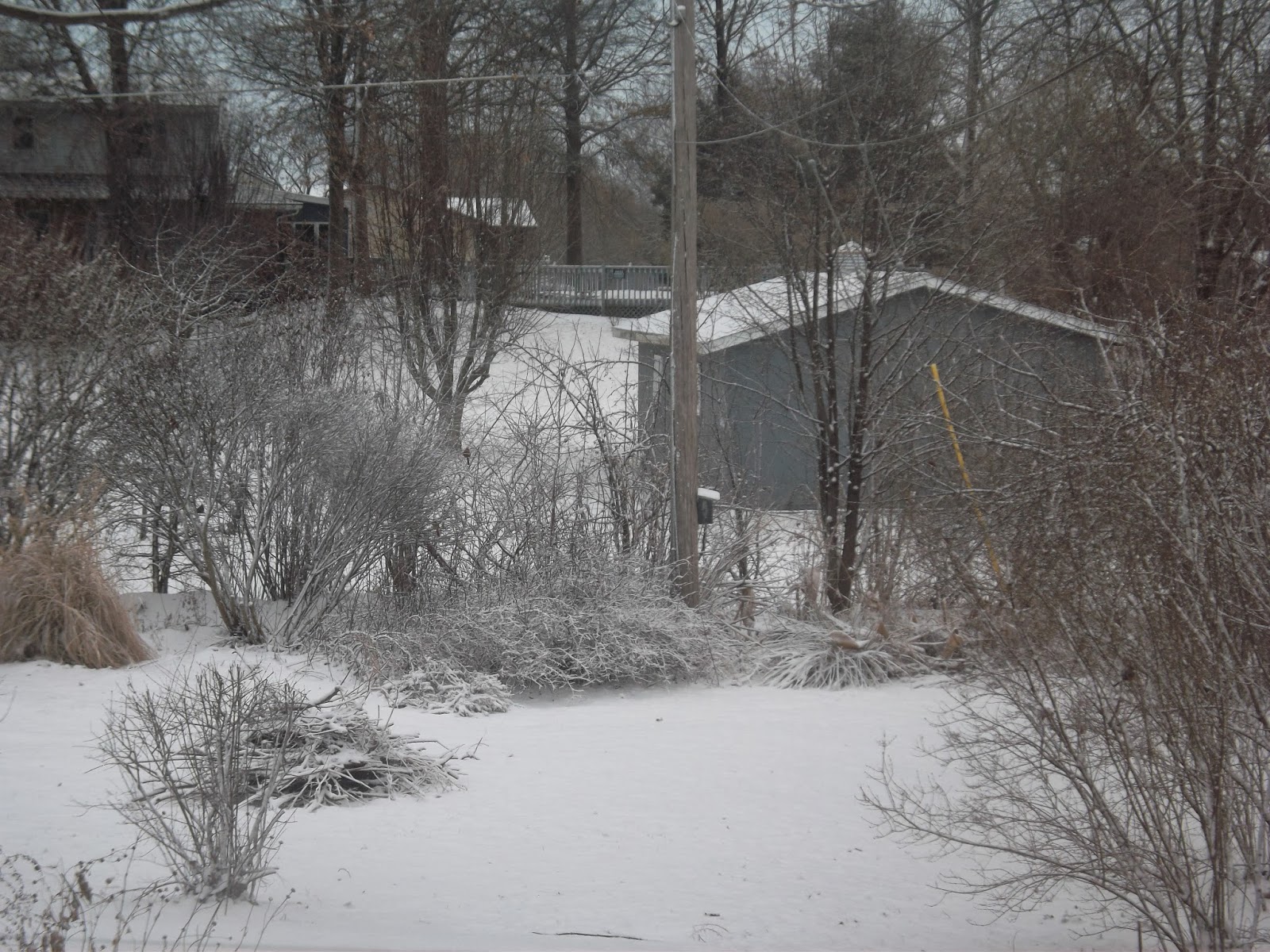2 inch soil block maker
Makes 40-44 blocks per flat depending on spacing
Knowing that these would probably dry out quicker I bought some trays without holes.
Notice the little impression this maker creates in the center of the block for placing the seeds.
Benefits: No more plastic containers, air pruned roots, no root binding, less transplant shock, no 2nd transplant (these will go straight into the ground from here, using less seed
Using less seed was a benefit I hadn't thought about until I went to plant. Normally I would dump an entire packet (really too much) into a pot and let the seedlings duke it out for resources. I think I will get more plants with this method and now I have seed lasting more than 1 season too.
Here are my first successful seedlings: lettuces
Tomato picks for 2014
This is the fewest varieties of tomatoes I plan on starting in years. I've decided to keep growing the ones I like while trying new varieties and weeding out the least favs each season. I plan on having about 40 plants total. They are:
Whites: Ivory Egg (2013) & Ivory Pear (new)
Blacks/Purples: Purple Russian (2013) & Black Plum (2013)
Stripes: Violet Jasper (new)
Pinks/red: German Lunchbox (grown for years), Illinois Beauty (new), Gezahnte (new)
I will also let the tiny red cherries and white currant tomatoes reseed around the garden/yard as usual.
Just started
Valerian, Fennel, Lovage, Nero kale, Snapdragons, 3 kinds of petunias, Browalia
Gimmicks
Kiddo got this teeny tiny egg greenhouse with herb seeds (50 seeds at least) for Xmas. I was skeptical of anything germinating, but of course I had to give it my best go.
I think we counted about 32 seedlings and transplanted a bunch into a larger pot while several more seeds have since come up in the original egg.
Looks like dill, thyme, sage and basil.
What's Up?
Spinach- finally! Had to do a second sowing and then bam.
Pepper seeds up.
Tronchuda Cabbage on left. Russian kale on right.
Bok Choy
Today in Weather
Another snow day for the kid. Make that 5 in 2014. While we only received about 1in. I think there is ice underneath.
Seeds for birds
What you don't see in this photo is the number of birds hiding in the "living fence" landscape. Having varying layers of woody plants (short shrubs, medium height shrubs, shrubs with berries, small trees) allows for lots of hiding places and food. Recently a Mocking Bird has taken up residence. I'm pretty sure it is because of the remaining Possum Haw, Viburnum and Chokeberry fruits to choose from. This is one of my favorite areas to look at. I just like all of the layers here. It also is hiding the frog pond- a secret play station for the kiddo.
I'm trying to resist starting the tomato seeds, but honestly I'm not sure how much longer I can wait....

